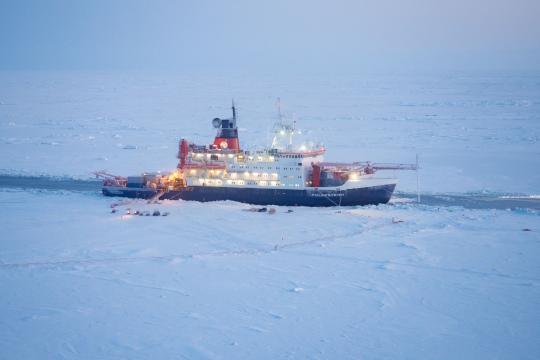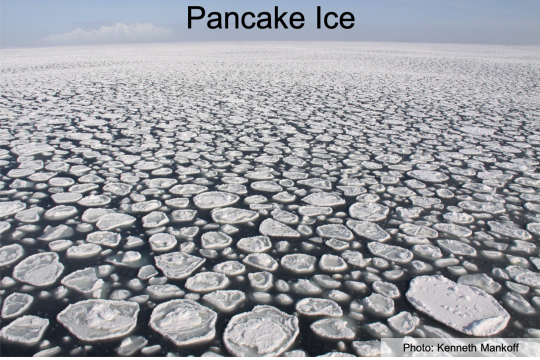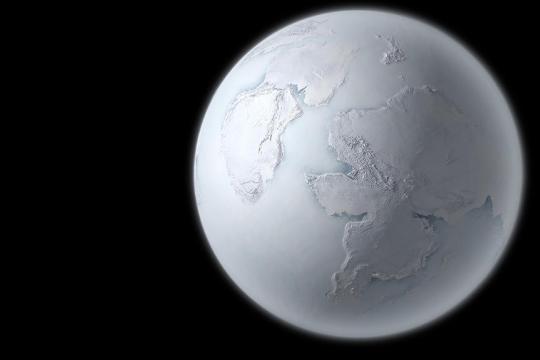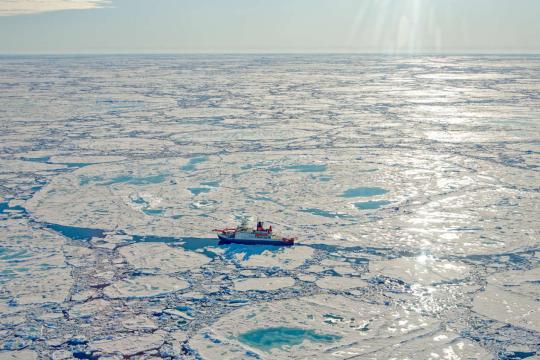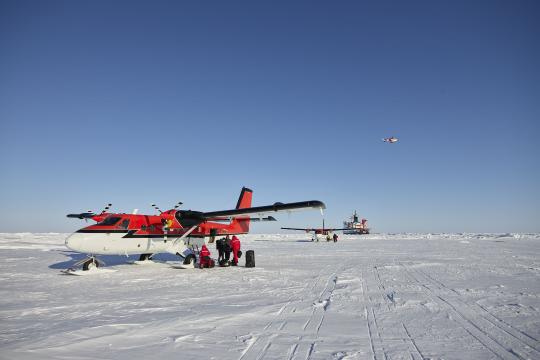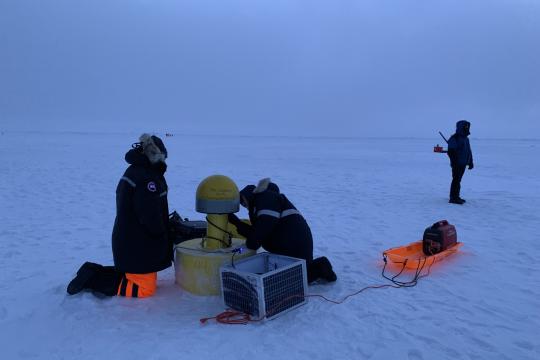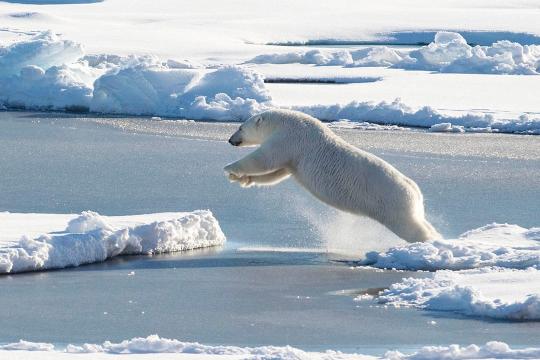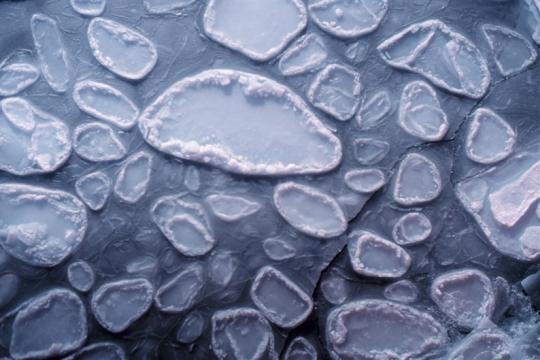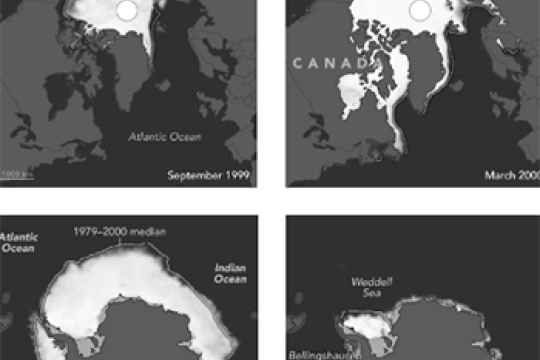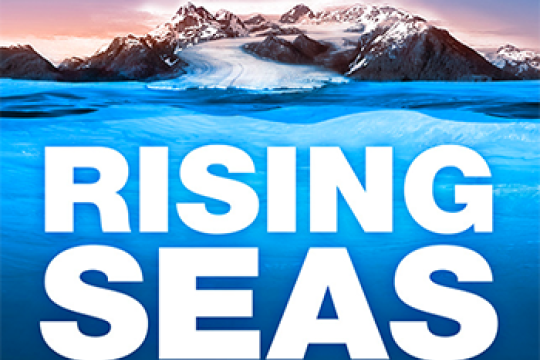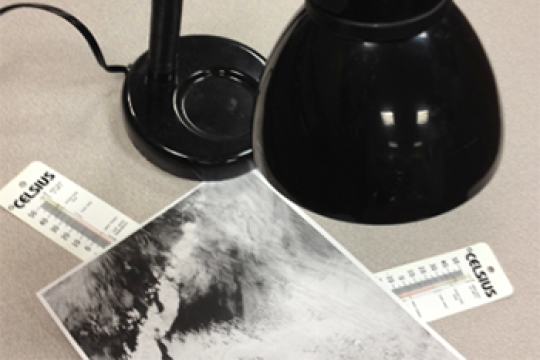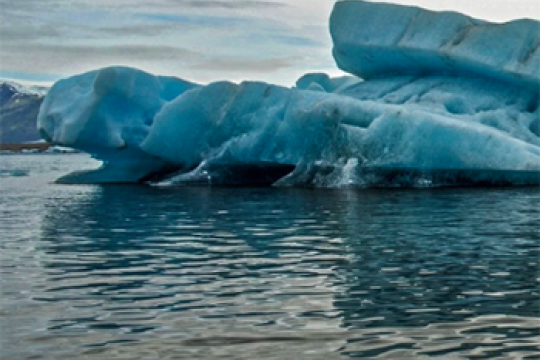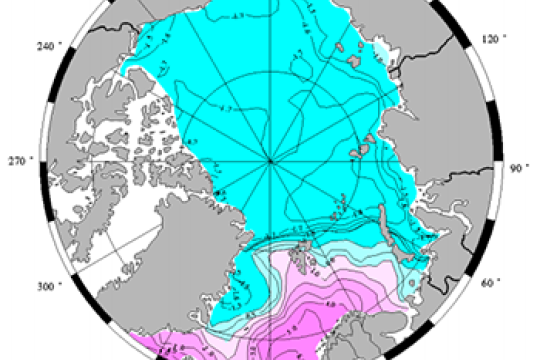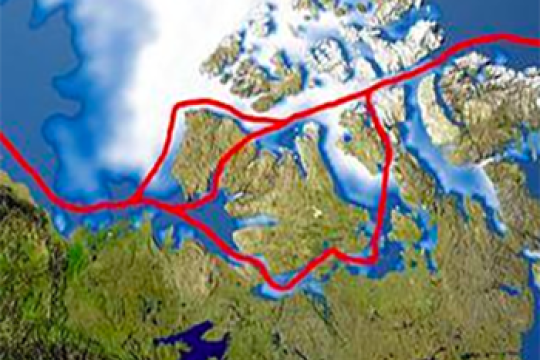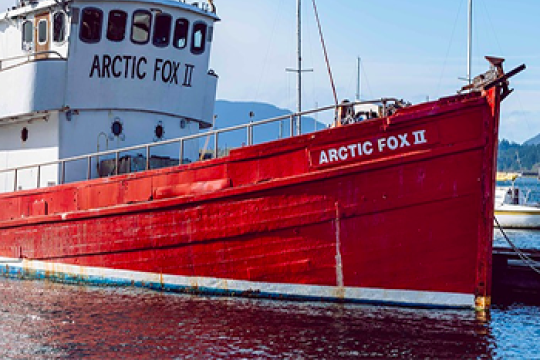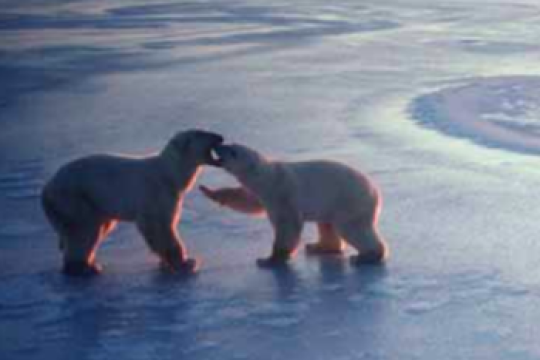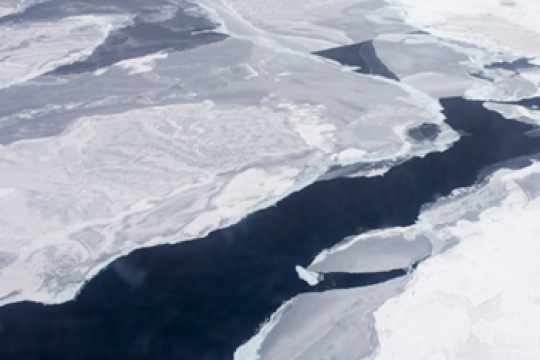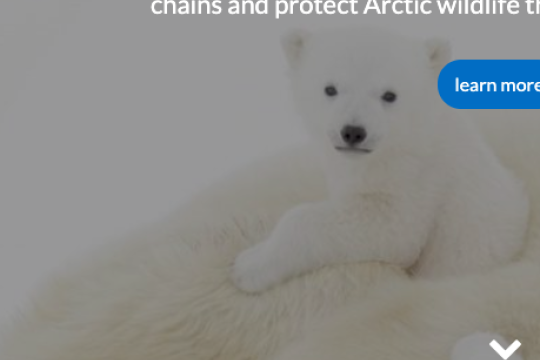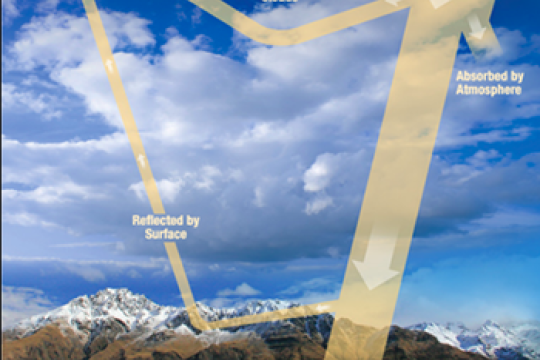Sea ice
New Ice, New Problems
The sea ice in the Arctic is becoming newer and thinner. What kinds of impacts could this have on the Arctic region? Photo credit: Jan Rohde/AWI
Lesson plan
Subject: Expeditions, mosaic monday, Obtaining and evaluating information, Oceans and ocean circulation, Sea ice
Grade Level: Middle School, High School, University/college
Developer: CIRES
The sea ice in the Arctic is becoming newer and thinner. What kinds of impacts could this have on the Arctic region? Photo credit: Jan Rohde/AWI
Lesson plan
Subject: Expeditions, mosaic monday, Obtaining and evaluating information, Oceans and ocean circulation, Sea ice
Grade Level: Middle School, High School, University/college
Developer: CIRES
The Writing's in the Ice
Did you know that sea ice has a life cycle? Learn more in this short (~30 minute) activity.
Lesson plan
Subject: Arguing from evidence, mosaic monday, Sea ice
Grade Level: Middle School, High School
Developer: CIRES
Did you know that sea ice has a life cycle? Learn more in this short (~30 minute) activity.
Lesson plan
Subject: Arguing from evidence, mosaic monday, Sea ice
Grade Level: Middle School, High School
Developer: CIRES
Quick Bite: Melting Ice-Albedo Feedback
Sea ice extent in the Arctic is on the decline. Could the opposite of a Snowball Earth happen? Figure credit: MIKKEL JUUL JENSEN/SPL/COSMOS
Project of Mosaic Quick bite
Subject: Arguing from evidence, Climate, Earth science, mosaic monday, Sea ice
Grade Level: Middle School, High School, University/college
Developer: CIRES
Sea ice extent in the Arctic is on the decline. Could the opposite of a Snowball Earth happen? Figure credit: MIKKEL JUUL JENSEN/SPL/COSMOS
Project of Mosaic Quick bite
Subject: Arguing from evidence, Climate, Earth science, mosaic monday, Sea ice
Grade Level: Middle School, High School, University/college
Developer: CIRES
Quick Bite: Radiation Correlation?
This short activity will help your students start to connect the concept of albedo to the Arctic and Earth's climate.
Quick bite
Subject: Climate, Constructing explanations, Earth science, mosaic monday, Sea ice
Grade Level: Middle School, High School
Developer: CIRES
This short activity will help your students start to connect the concept of albedo to the Arctic and Earth's climate.
Quick bite
Subject: Climate, Constructing explanations, Earth science, mosaic monday, Sea ice
Grade Level: Middle School, High School
Developer: CIRES
Quick Bite: On (Thick or) Thin Ice
How thick does sea ice need to be to support an airplane landing? It turns out we can use a simple equation to calculate the answer. Photo credit: Michael Gutsche/AWI
Project of Mosaic Quick bite
Subject: Computational thinking, Expeditions, mosaic monday, Sea ice
Grade Level: Middle School, High School
Developer: CIRES
How thick does sea ice need to be to support an airplane landing? It turns out we can use a simple equation to calculate the answer. Photo credit: Michael Gutsche/AWI
Project of Mosaic Quick bite
Subject: Computational thinking, Expeditions, mosaic monday, Sea ice
Grade Level: Middle School, High School
Developer: CIRES
Tracking Ice: Arctic Sea Ice and Mathematics Curriculum
Through the course of four modules, students will estimate the accuracy of their forecast and determine if it is fit for the purpose of guiding a search and rescue mission. After building their forecasting model, students will know how to access the coordinates of buoys tracked by the International Arctic Buoy Program (IABP) to make a sea ice drift forecast.
Lesson plan
Subject: Climate, Computational thinking, Developing and using models, Earth science, Oceans and ocean circulation, Sea ice
Grade Level: High School
Developer: SMILE Oregon State
Through the course of four modules, students will estimate the accuracy of their forecast and determine if it is fit for the purpose of guiding a search and rescue mission. After building their forecasting model, students will know how to access the coordinates of buoys tracked by the International Arctic Buoy Program (IABP) to make a sea ice drift forecast.
Lesson plan
Subject: Climate, Computational thinking, Developing and using models, Earth science, Oceans and ocean circulation, Sea ice
Grade Level: High School
Developer: SMILE Oregon State
Know Your Ocean: Polar Research
Learn more about polar topics like glaciers and ice sheets, Arctic sea life, and sea ice in these polar research educational modules from the Woods Hole Oceanographic Institution.
Subject: Earth science, Ecosystems, Geography, Life science, Obtaining and evaluating information, Oceans and ocean circulation, Physical science, Sea ice
Grade Level: Middle School, High School, University/college, Adult
Learn more about polar topics like glaciers and ice sheets, Arctic sea life, and sea ice in these polar research educational modules from the Woods Hole Oceanographic Institution.
Subject: Earth science, Ecosystems, Geography, Life science, Obtaining and evaluating information, Oceans and ocean circulation, Physical science, Sea ice
Grade Level: Middle School, High School, University/college, Adult
Timing an Arctic Expedition
The MOSAiC (Multidisciplinary Drifting Observatory for the Study of Arctic Climate) expedition officially launched on September 20, 2019 when the icebreaker Polarstern set sail from Tromsø, Norway. The Polarstern will be looking for an ice floe that it can freeze into and drift along with across the Arctic for a year. The ice must be thick enough throughout the year to support the scientists and instruments that will be on it, but close to thinner ice that is easy to drill through. Why did the MOSAiC expedition begin in September? It turns out this isn't random, but a strategically chosen departure date. Challenge your students to use the National Snow and Ice Data Center's Charctic Interactive Sea Ice Graph to come up with an answer to this question. Then, read more about this question here. Photo: M. Van Woert, NOAA
Project of Mosaic Quick bite
Subject: Constructing explanations, Earth science, Expeditions, mosaic monday, Oceans and ocean circulation, Sea ice
Grade Level: Middle School, High School, University/college, Adult
Developer: CIRES
The MOSAiC (Multidisciplinary Drifting Observatory for the Study of Arctic Climate) expedition officially launched on September 20, 2019 when the icebreaker Polarstern set sail from Tromsø, Norway. The Polarstern will be looking for an ice floe that it can freeze into and drift along with across the Arctic for a year. The ice must be thick enough throughout the year to support the scientists and instruments that will be on it, but close to thinner ice that is easy to drill through. Why did the MOSAiC expedition begin in September? It turns out this isn't random, but a strategically chosen departure date. Challenge your students to use the National Snow and Ice Data Center's Charctic Interactive Sea Ice Graph to come up with an answer to this question. Then, read more about this question here. Photo: M. Van Woert, NOAA
Project of Mosaic Quick bite
Subject: Constructing explanations, Earth science, Expeditions, mosaic monday, Oceans and ocean circulation, Sea ice
Grade Level: Middle School, High School, University/college, Adult
Developer: CIRES
Sea Ice Predictive Model
Using sea ice extent and carbon dioxide data, students make predictions about future sea ice extent using simple statistics to evaluate a linear relationship. Students compare Arctic and Antarctic conditions.
Lesson plan
Subject: Analyzing and interpreting data, Climate, Computational thinking, Sea ice
Grade Level: High School, University/college
Developer: Joceline Boucher, SERC
Using sea ice extent and carbon dioxide data, students make predictions about future sea ice extent using simple statistics to evaluate a linear relationship. Students compare Arctic and Antarctic conditions.
Lesson plan
Subject: Analyzing and interpreting data, Climate, Computational thinking, Sea ice
Grade Level: High School, University/college
Developer: Joceline Boucher, SERC
Land Ice/Sea Ice: How does melting ice affect sea level?
Students use a simple model to compare sea level rise due to melting land ice versus melting sea ice.
Lesson plan
Subject: Asking questions, Constructing explanations, Developing and using models, Physical science, Sea ice
Grade Level: Middle School
Developer: U.S. Ice Drilling Program
Students use a simple model to compare sea level rise due to melting land ice versus melting sea ice.
Lesson plan
Subject: Asking questions, Constructing explanations, Developing and using models, Physical science, Sea ice
Grade Level: Middle School
Developer: U.S. Ice Drilling Program
Sea Ice and Heat: A Vicious Cycle
Students explore the different heat absorption of ice and open water using a simple experimental set up.
Lesson plan
Subject: Developing and using models, Earth science, Physical science, Sea ice
Grade Level: Middle School, High School
Developer: UCAR, Center for Science Education
Students explore the different heat absorption of ice and open water using a simple experimental set up.
Lesson plan
Subject: Developing and using models, Earth science, Physical science, Sea ice
Grade Level: Middle School, High School
Developer: UCAR, Center for Science Education
Impacts of a Warming Arctic
Using NASA data, learners evaluate evidence for decreasing ice in the Arctic and explore the impact of global climate change on the Arctic.
Lesson plan
Subject: Analyzing and interpreting data, Atmosphere, Climate, Constructing explanations, Earth science, Sea ice
Grade Level: Middle School, High School, University/college, Adult
Developer: NASA
Using NASA data, learners evaluate evidence for decreasing ice in the Arctic and explore the impact of global climate change on the Arctic.
Lesson plan
Subject: Analyzing and interpreting data, Atmosphere, Climate, Constructing explanations, Earth science, Sea ice
Grade Level: Middle School, High School, University/college, Adult
Developer: NASA
Arctic Ocean Exploration: Current Events
Using authentic data and two hands on activities, students explore the driving forces for ocean currents, with a focus on the Arctic Ocean.
Lesson plan
Subject: Analyzing and interpreting data, Developing and using models, Earth science, Oceans and ocean circulation, Physical science, Sea ice
Grade Level: High School
Developer: NOAA
Using authentic data and two hands on activities, students explore the driving forces for ocean currents, with a focus on the Arctic Ocean.
Lesson plan
Subject: Analyzing and interpreting data, Developing and using models, Earth science, Oceans and ocean circulation, Physical science, Sea ice
Grade Level: High School
Developer: NOAA
Northwest Passage
Students use Google Earth to explore changing ice conditions in the Arctic, and how these changing conditions affect shipping routes, fossil fuel extraction, geopolitics, and other Arctic issues.
Lesson plan
Subject: Analyzing and interpreting data, Climate, Geography, Geopolitics, Sea ice
Grade Level: High School, University/college
Developer: Glenn Richard, SERC
Students use Google Earth to explore changing ice conditions in the Arctic, and how these changing conditions affect shipping routes, fossil fuel extraction, geopolitics, and other Arctic issues.
Lesson plan
Subject: Analyzing and interpreting data, Climate, Geography, Geopolitics, Sea ice
Grade Level: High School, University/college
Developer: Glenn Richard, SERC
Design and Build a Sea Ice Drifter
In an engineering design challenge, students learn about sea ice and sea ice observation technology to build and design their own sea ice drifter.
Project of Mosaic Lesson plan
Subject: Asking questions, Constructing explanations, Engineering and technology, Physical science, Sea ice
Grade Level: 3-5
Developer: SMILE Oregon State
In an engineering design challenge, students learn about sea ice and sea ice observation technology to build and design their own sea ice drifter.
Project of Mosaic Lesson plan
Subject: Asking questions, Constructing explanations, Engineering and technology, Physical science, Sea ice
Grade Level: 3-5
Developer: SMILE Oregon State
Polar Bears in a Warming World:A Climate Change Lesson
Students will locate and distinguish the four major sea ice eco-regions in the Arctic and explore the impacts of sea ice loss over time due to climate change and the ensuing threats these changes may have on the Arctic ecosystem and its inhabitants.
Lesson plan
Subject: Climate, Constructing explanations, Earth science, Ecosystems, Life science, Sea ice
Grade Level: 3-5, Middle School
Developer: Polar Bears International
Students will locate and distinguish the four major sea ice eco-regions in the Arctic and explore the impacts of sea ice loss over time due to climate change and the ensuing threats these changes may have on the Arctic ecosystem and its inhabitants.
Lesson plan
Subject: Climate, Constructing explanations, Earth science, Ecosystems, Life science, Sea ice
Grade Level: 3-5, Middle School
Developer: Polar Bears International
Arctic Ocean Exploration: Being Productive in the Arctic Ocean
Students analyze sea ice cover, nutrient, and primary productivity data to understand factors that may limit primary productivity in the Arctic Ocean.
Lesson plan
Subject: Analyzing and interpreting data, Arguing from evidence, Ecosystems, Life science, Oceans and ocean circulation, Sea ice
Grade Level: High School
Developer: NOAA
Students analyze sea ice cover, nutrient, and primary productivity data to understand factors that may limit primary productivity in the Arctic Ocean.
Lesson plan
Subject: Analyzing and interpreting data, Arguing from evidence, Ecosystems, Life science, Oceans and ocean circulation, Sea ice
Grade Level: High School
Developer: NOAA
EcoChains: Arctic Life Game
The EcoChains Arctic Life game accurately models the effects of climate change on wildlife food-webs. The game shows how human actions such as the development of alternative energy can influence carbon pollution.
Game
Subject: Arguing from evidence, Constructing explanations, Earth science, Ecosystems, Life science, Obtaining and evaluating information, Sea ice
Grade Level: 3-5, Middle School, High School
Developer: Ecochains
The EcoChains Arctic Life game accurately models the effects of climate change on wildlife food-webs. The game shows how human actions such as the development of alternative energy can influence carbon pollution.
Game
Subject: Arguing from evidence, Constructing explanations, Earth science, Ecosystems, Life science, Obtaining and evaluating information, Sea ice
Grade Level: 3-5, Middle School, High School
Developer: Ecochains
Albedo: measuring the reflective properties of different surfaces
Students measure the albedo and surface temperature of various ice surfaces and changing processes as the ice melts over time. Students apply what they’ve learned in the experiment to the understanding of albedo, and the role albedo plays in the Earth’s energy budget.
NGSS Aligned Lesson plan
Subject: Analyzing and interpreting data, Asking questions, Developing and using models, Earth science, Obtaining and evaluating information, Physical science, Planning investigations, Sea ice
Grade Level: Middle School, High School, University/college
Developer: U.S. Ice Drilling Program
Students measure the albedo and surface temperature of various ice surfaces and changing processes as the ice melts over time. Students apply what they’ve learned in the experiment to the understanding of albedo, and the role albedo plays in the Earth’s energy budget.
NGSS Aligned Lesson plan
Subject: Analyzing and interpreting data, Asking questions, Developing and using models, Earth science, Obtaining and evaluating information, Physical science, Planning investigations, Sea ice
Grade Level: Middle School, High School, University/college
Developer: U.S. Ice Drilling Program
